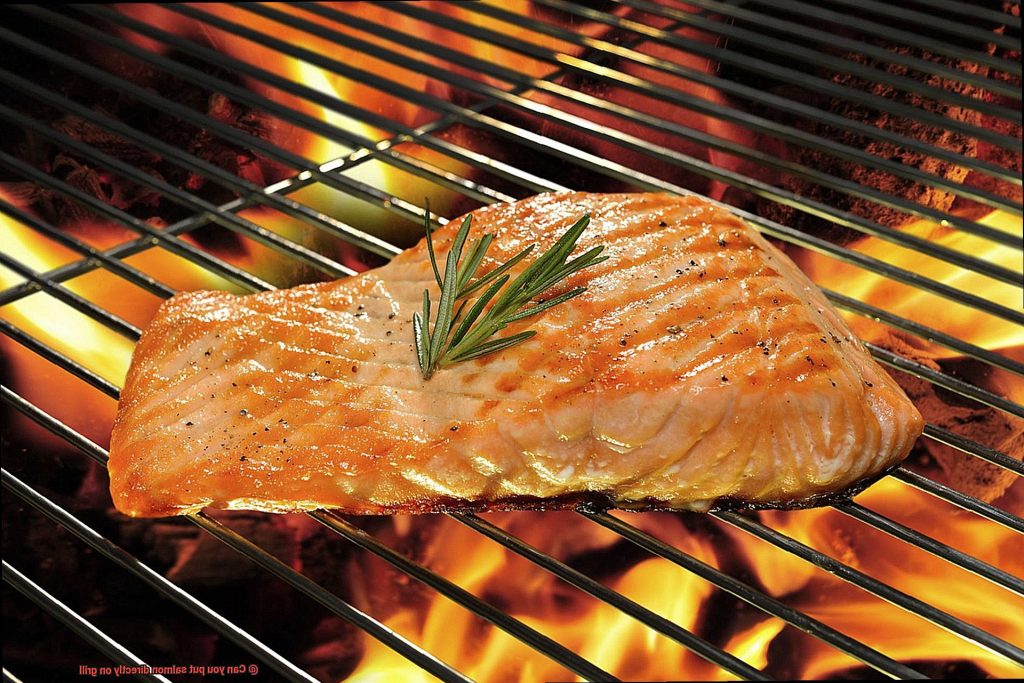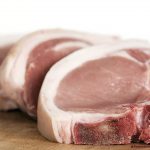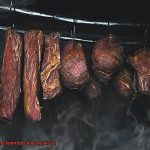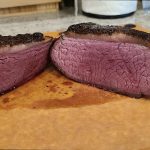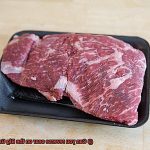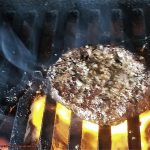With its tantalizing smoky flavor, grilling is a favorite method for many seafood enthusiasts. If you’re wondering whether you can put salmon directly on the grill, you’re in luck.
In this article, we’ll unravel the secrets behind grilling salmon to perfection. From choosing the right cut to prepping it for the grill, we’ll share expert tips and dos and don’ts to ensure your next grilling experience is a mouthwatering success.
So grab your tongs, fire up the grill, and let’s dive into the wonderful world of grilling salmon.
Contents
Types of Grills for Grilling Salmon
Grilling salmon directly on the grill is a popular cooking method that can result in delicious and flavorful fish. Here are some important points to consider when grilling salmon directly on the grill:
Preparation
Clean and preheat the grill before placing the salmon on it. This ensures that the fish does not stick to the grates and cooks evenly.
Skin-on Fillets
It is recommended to use skin-on fillets when grilling salmon directly on the grill. The skin acts as a protective layer and helps to keep the fish intact while cooking.
Marination or Seasoning
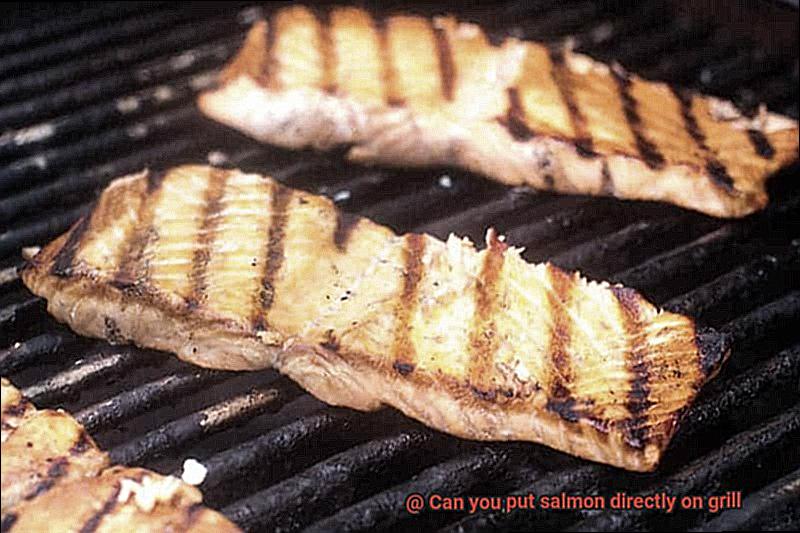
Before placing the salmon on the grill, it can be marinated or seasoned with herbs, spices, or a marinade of your choice. This adds flavor and enhances the taste of the fish.
Placement
When placing the salmon on the grill, it is crucial to place it skin-side down first. This helps to prevent sticking and also allows for even cooking.
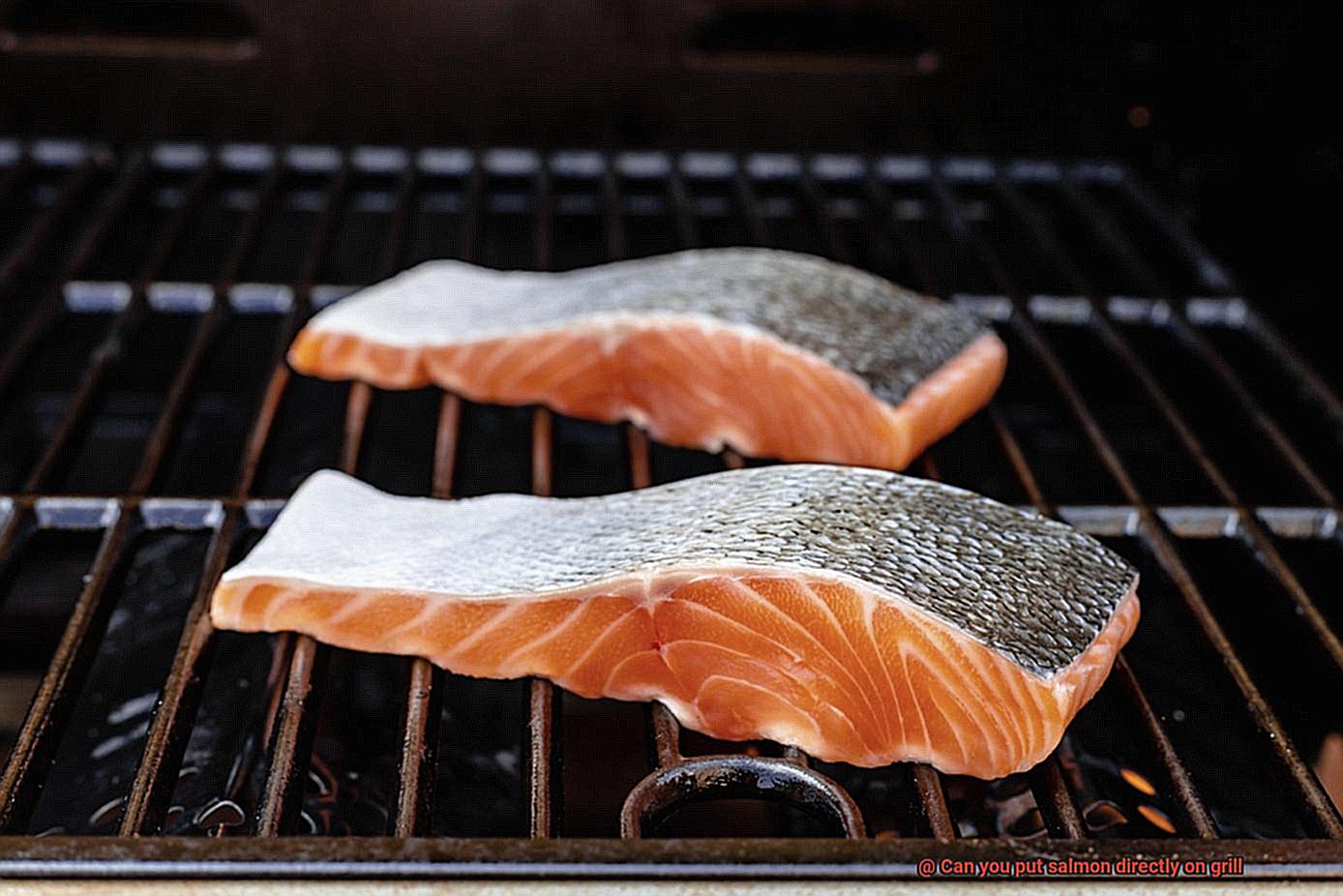
Monitoring Cooking Time and Temperature
It is important to monitor the cooking time and temperature while grilling salmon directly on the grill. Overcooked salmon can become dry, while undercooked salmon may not be safe to consume. Cook salmon for about 4-6 minutes per side for medium-rare to medium doneness.
Checking Doneness
To check if the salmon is cooked properly, you can use a meat thermometer. The internal temperature should reach 145°F (63°C) for safe consumption.
Resting Before Serving
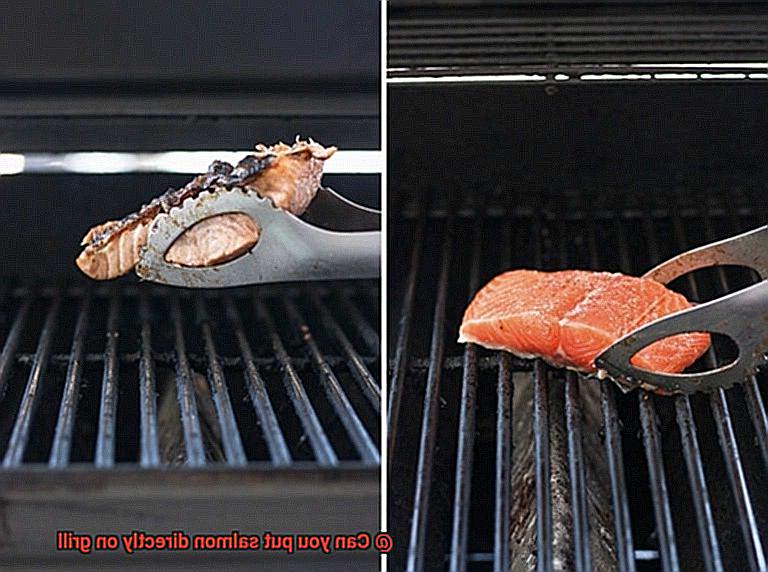
Once the salmon is cooked, it should be carefully removed from the grill using a spatula or tongs. It is advisable to let it rest for a few minutes before serving to allow the juices to redistribute.
Serving Suggestions
Grilled salmon can be served as a main dish alongside various sides such as grilled vegetables, rice, or salad. It is a versatile protein that can be enjoyed in various recipes and preparations.
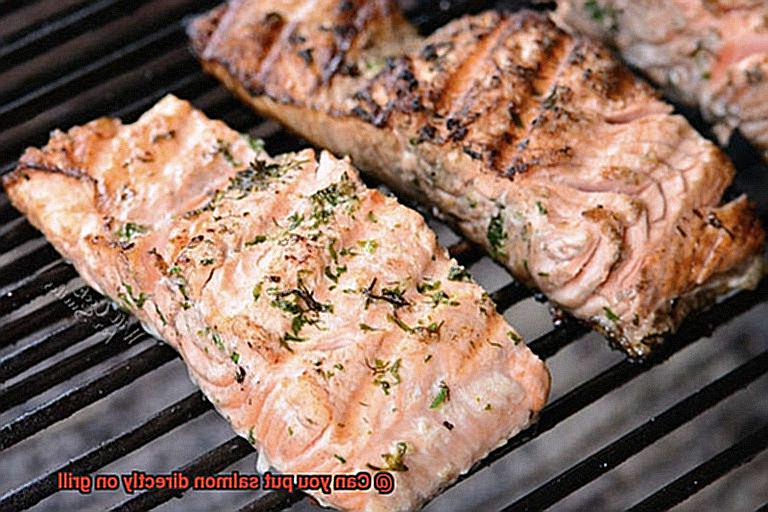
By following these tips and techniques, you can achieve perfectly grilled salmon that is juicy, flavorful, and cooked to perfection.
When it comes to grilling salmon, there are several types of grills that you can choose from. Each type has its own advantages and disadvantages, so it’s important to consider your preferences and cooking style before making a decision. Here are some popular options:
Charcoal Grill
This classic grill is known for imparting a smoky flavor to the food. It uses charcoal briquettes or lump charcoal as the fuel source, which provides a high heat output. When grilling salmon on a charcoal grill, it’s important to create a two-zone fire by placing the coals on one side and leaving the other side empty. This allows for both direct and indirect heat cooking, giving you more control over the cooking process.
The main advantage of using a charcoal grill is the smoky flavor it imparts to the salmon. The charred and smoky taste can enhance the overall flavor profile of the fish. Additionally, charcoal grills can reach higher temperatures than other types of grills, allowing for a quick sear and crispy skin on the salmon.
However, charcoal grills require more time and effort to set up and clean compared to other grills. They also require more skill to control the temperature. Achieving the right heat level and maintaining it throughout the cooking process can be challenging for beginners.
Gas Grill
Gas grills are convenient and easy to use, making them a popular choice among home cooks. They use propane or natural gas as the fuel source, providing consistent heat throughout the cooking process. With a gas grill, you can control the temperature easily using the burner knobs, allowing for precise cooking of your salmon. Additionally, many gas grills come with features like side burners or rotisserie attachments, providing versatility in your grilling options.
One of the main advantages of using a gas grill is its convenience. It heats up quickly and requires minimal maintenance compared to charcoal grills.
Preparing the Grill for Grilling Salmon
To truly savor the succulent flavors of grilled salmon, it is essential to prepare your grill properly. Follow these steps to ensure that your grilling experience is a resounding success:
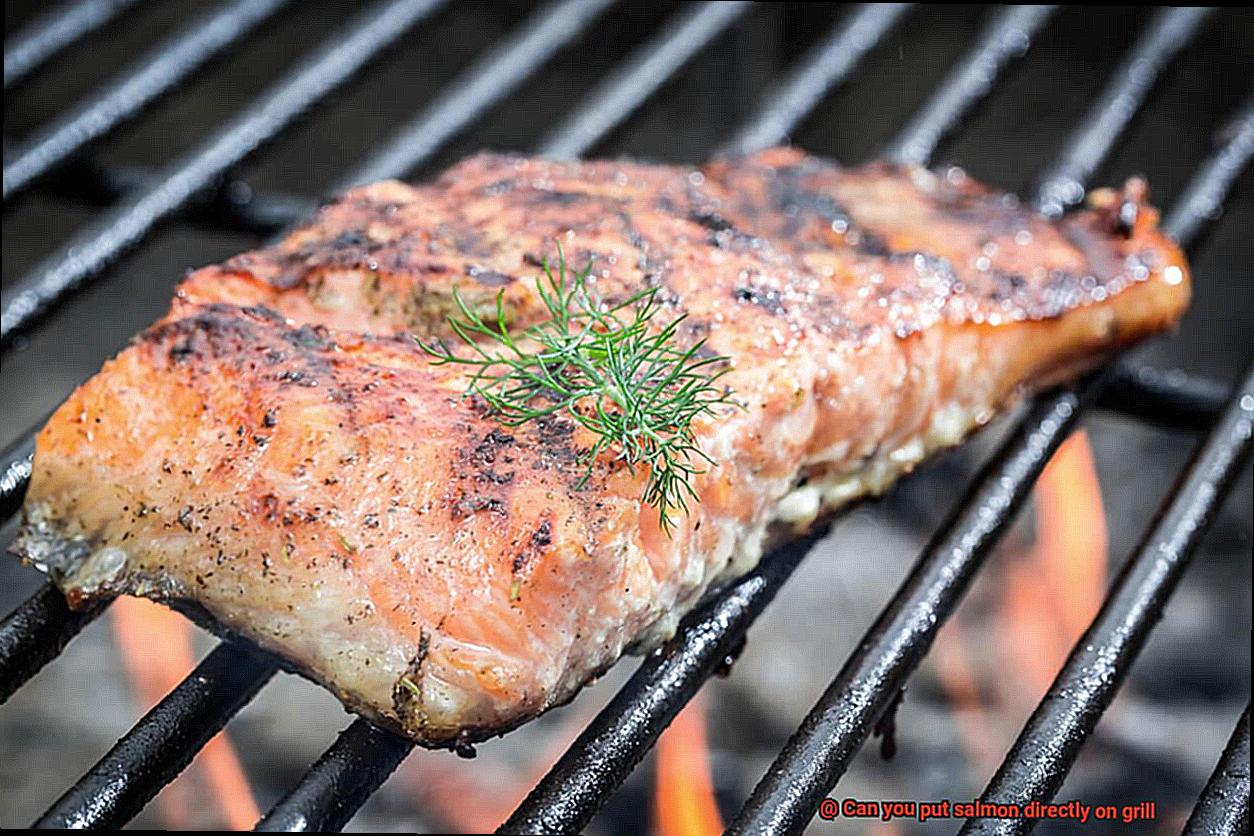
First and foremost, give your grill a thorough cleaning. Preheat it on high for approximately 15 minutes to loosen any stubborn residue. Then, take a grill brush and vigorously scrub the grates, removing any remnants of previous meals. This crucial step not only enhances the flavor but also prevents sticking.
Next, it’s time to oil the grates. Using an oil with a high smoke point, such as vegetable or canola oil, dip a folded paper towel into the oil and use tongs to evenly coat the grates. This simple yet vital act will prevent the salmon from adhering to the grates during cooking.
Once the grill is cleaned and oiled, preheat it again before placing the salmon on the grates. For direct grilling, where the salmon rests directly on the grates, preheat the grill to a medium-high heat of around 400-450°F. This ensures that the grill reaches the optimal cooking temperature and creates those sought-after grill marks on your salmon.
While preheating, gather any additional tools and ingredients you may need for grilling salmon. Have a trusty spatula or tongs at hand for flipping the fish with ease. Consider using aluminum foil for effortless cleanup or as a makeshift cooking surface if necessary. Don’t forget any marinades or seasonings you desire to enhance the flavor of your salmon.
It’s worth mentioning that some enthusiasts prefer using a grill basket or grilling plank when cooking salmon on the grill. These methods offer added convenience and prevent the fish from falling apart or sticking to the grates. However, grilling salmon directly on the grates can also yield mouthwatering results when executed correctly.
What Type of Fillet to Use for Grilling Salmon?
When it comes to grilling salmon, choosing the right type of fillet is crucial for a delicious and flavorful result. Each option – skin-on fillets, skinless fillets, or salmon steaks – brings its own unique characteristics to the table.
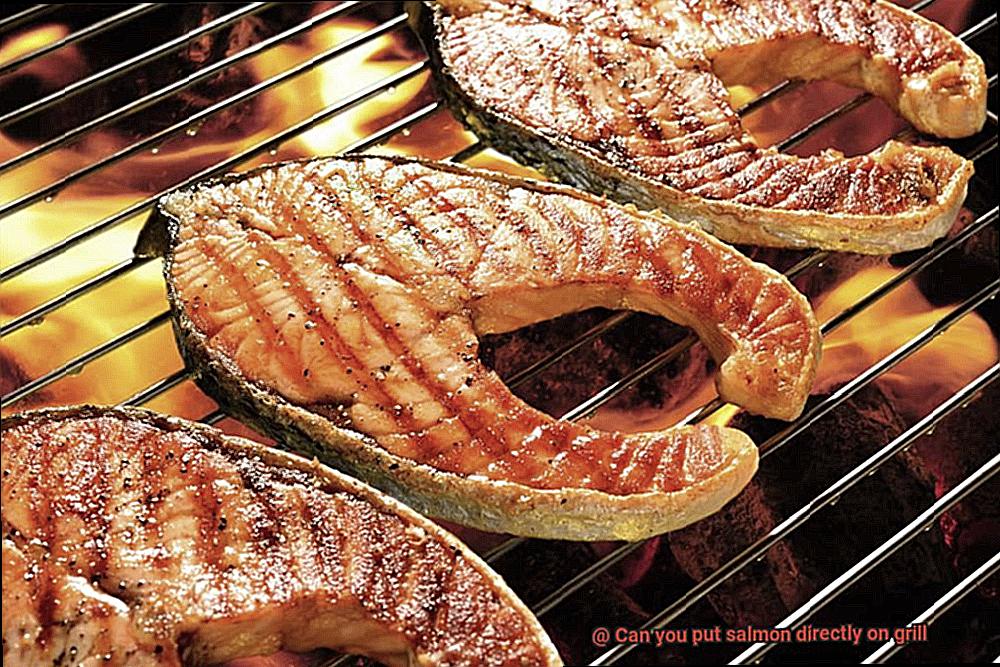
Let’s start with the skin-on fillet. This popular choice acts as a natural barrier between the fish and the grill, preventing sticking and ensuring the fish stays intact. The skin also adds an extra layer of flavor and moisture when cooked properly. Just make sure to scale and clean the skin before grilling to avoid any unwanted tastes or textures.
If you prefer a skinless fillet, don’t worry – you can still achieve a delightful grilled salmon. To prevent sticking, oil the grill grates or brush some oil onto the fish itself before placing it on the grill. This creates a non-stick surface and helps maintain the integrity of the fillet.
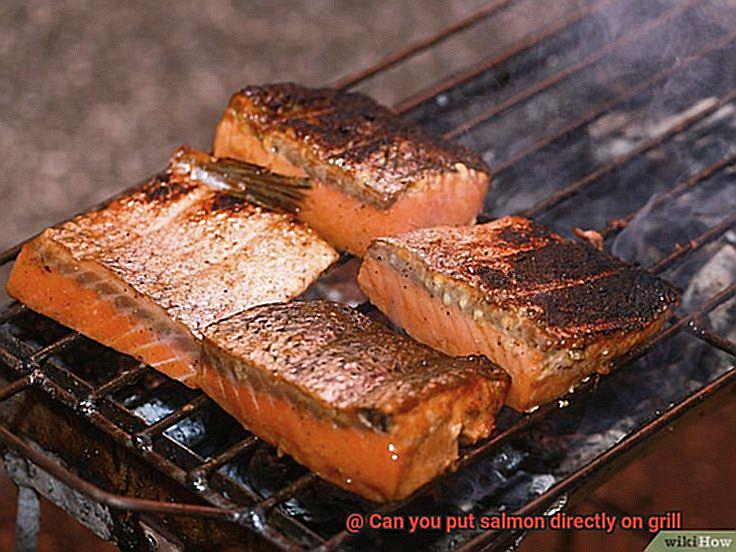
Salmon steaks are another option worth considering. These cross-section cuts include both flesh and bone, offering an added depth of flavor and juiciness during grilling. Keep in mind that salmon steaks are often thicker than fillets, so adjust your grilling time accordingly to ensure even cooking throughout.
When selecting a fillet for grilling, also take into account its thickness. Thicker fillets may require longer cooking times, while thinner ones cook faster but have a higher risk of drying out if not monitored closely. Adjust your grilling time based on the thickness of your chosen fillet for optimal results.
Last but not least, prioritize quality when choosing salmon for grilling. Fresh, high-quality salmon will always deliver superior flavor and texture compared to lower-grade options. Head to a reputable fishmonger or seafood market to source your salmon for the best taste and freshness.
Flavoring and Marinating the Salmon Before Grilling
Flavoring and marinating the salmon before grilling is not only a practical step, but it’s also an opportunity to create a culinary masterpiece that will tantalize your taste buds. There are several methods you can use to infuse delicious flavors into your salmon, each bringing its unique touch to the dish.
One popular way to add flavor is by using a marinade. Picture this: succulent salmon fillets soaking in a pool of tangy lemon juice, fragrant herbs, and aromatic spices. The acidity in the marinade works like a magic potion, breaking down the proteins in the fish and transforming it into a tender and flavorful delight. To achieve maximum flavor infiltration, marinate the salmon for at least 30 minutes to an hour. If you’re feeling adventurous, let it luxuriate in the marinade overnight for an explosion of intense flavors. Just remember to keep it chilled in the refrigerator to prevent any unwanted guests from crashing the party.
Another option for flavoring salmon is by using a dry rub. Imagine a symphony of herbs, spices, salt, and sugar harmoniously dancing on the surface of the fish. This dry rub forms a flavorful crust on the salmon, adding depth and complexity to its taste. When applying this magical mixture, make sure to coat all sides evenly, pressing it gently into the flesh. Allow the seasoned salmon to sit for about 15-20 minutes before grilling, allowing the flavors to mingle and create a masterpiece of taste.
In addition to marinades and dry rubs, you can take your grilled salmon to new heights by using flavored oils or glazes. Imagine brushing lemon-infused olive oil delicately onto the salmon, creating a subtle yet tantalizing taste that transports you straight to citrus heaven. Or picture a sticky glaze being lovingly applied during the grilling process, creating a sweet and savory coating that leaves your palate begging for more.
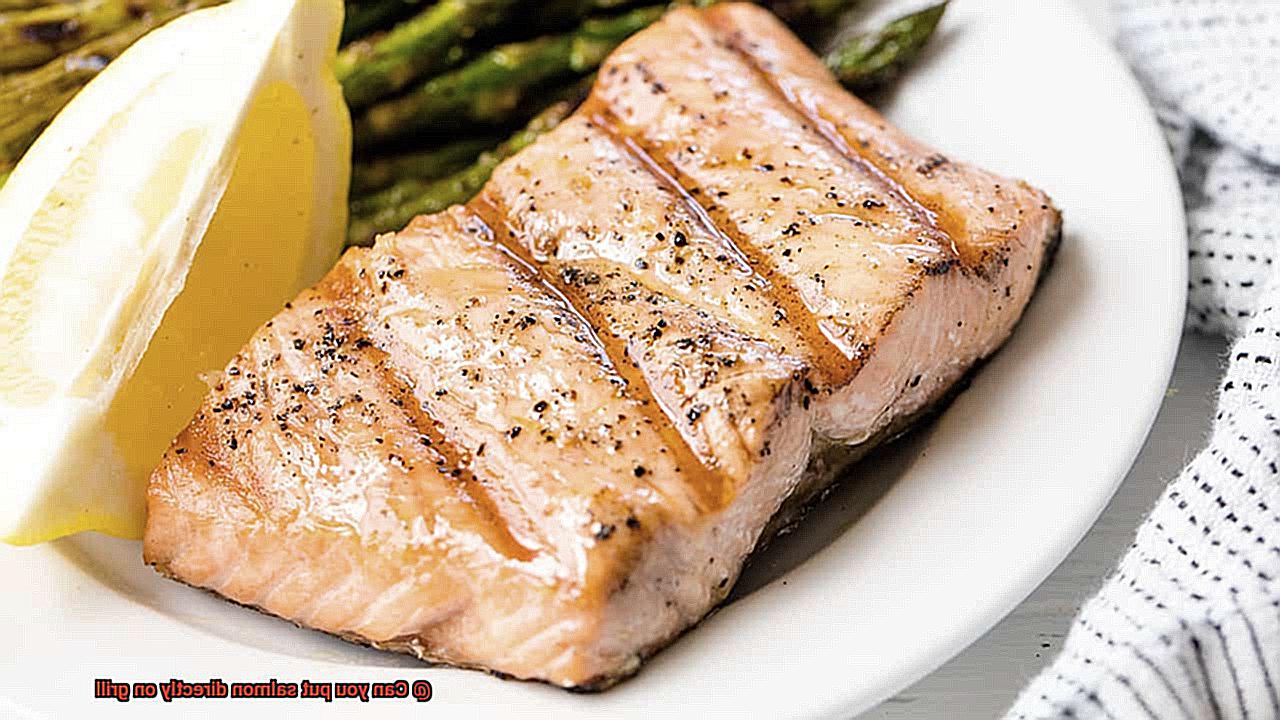
Remember, salmon has a delicate flavor that can be easily overwhelmed, so tread lightly when seasoning. Let the natural taste of the fish shine through by using a light hand with your chosen method of flavoring. And don’t forget to sprinkle a generous pinch of salt and pepper before grilling, as they work together to enhance the inherent flavors of the salmon.
Placing the Salmon on the Grill
Now that you have marinated and flavored your salmon to perfection, it’s time to take it to the grill and bring out those beautiful grill marks and smoky flavors. Follow these steps to ensure a successful grilling experience.
First, let’s talk about prepping the grill. Before placing your salmon on the grill, it’s important to start with clean grates. This ensures that there is no residue from previous use that could affect the flavor of your fish. Take a few minutes to scrub the grates clean with a grill brush.
Next, preheat your grill to medium-high heat, around 375-400°F (190-205°C). This ensures that the salmon cooks evenly and prevents sticking. A properly preheated grill is essential for achieving those perfect grill marks.
Now, let’s move on to prepping the fish. Before placing the salmon on the grill, brush both sides of each fillet with oil or marinade. This helps to add flavor and keep the fish moist during cooking. It also creates a barrier between the fish and the grill grates, preventing sticking.
To further prevent sticking, lightly oil the grill grates. You can do this by dipping a folded paper towel into oil and using tongs to rub it across the grates. This extra step will give you peace of mind knowing that your salmon will release easily from the grill.
When it comes to positioning the salmon on the grill, place the fillets skin-side down. This not only protects the delicate flesh of the fish but also makes flipping easier later on. Avoid overcrowding the grill to allow for even cooking. Leave enough space between each piece of fish to ensure proper heat circulation.
Now it’s time to cook your salmon. The cooking time may vary depending on factors like thickness and desired doneness. As a general guideline, a 1-inch thick piece of salmon will take about 4-6 minutes per side over medium-high heat. Remember, patience is key. Resist the temptation to move or flip the fish too soon. Let it cook undisturbed for a few minutes to develop a nice sear and prevent sticking.
To check if the salmon is cooked through, gently press down on the thickest part of the fillet with a fork or your finger. If it flakes easily and has an opaque color, it is likely done. Keep in mind that salmon will continue to cook slightly even after being removed from the grill, so it’s better to slightly undercook it than overcook it.
When it’s time to flip the salmon, use a spatula or tongs to carefully turn each fillet. This helps to prevent tearing or breaking of the fish. Once cooked to your desired doneness, carefully remove the salmon from the grill using a spatula or tongs. Transfer it to a serving platter or plate.
Allow the salmon to rest for a few minutes before serving. This allows the juices to redistribute and the fish to finish cooking. The result is a perfectly grilled salmon fillet that is moist and flavorful.
Monitoring Cooking Time and Temperature for Grilled Salmon
Grilling salmon is a culinary adventure that promises a delectable feast for the senses. Picture this: a sizzling fillet of salmon on a hot grill, its tantalizing aroma wafting through the air. But to achieve grilled salmon perfection – with a crisp, golden exterior and a succulent, flaky interior – there’s one crucial step you must never overlook: monitoring the cooking time and temperature.
Why is this step so vital? Let’s dive into the depths of flavor and technique:
- Even Cooking: Grilling salmon directly on the grill demands vigilance. By monitoring the cooking time, you ensure an even cook, preventing any dreaded overcooking or undercooking scenarios. With every bite, experience the harmonious texture throughout, as every morsel dances on your taste buds.
- Moisture Retention: Salmon’s delicate moisture is its crown jewel. Monitoring the cooking time and temperature safeguards this treasure, ensuring that your fish emerges from the flames perfectly cooked – moist, tender, and bursting with succulence. No dryness shall dare to spoil your feast.
- Food Safety: Salmon safety is not to be trifled with. Fear not. By monitoring the internal temperature with a trusty kitchen thermometer, you banish any lurking bacteria or parasites that may seek refuge within. The USDA recommends an internal temperature of 145°F (63°C) – the perfect armor against any culinary foes.
- Flavor Development: The grill’s fiery embrace imparts a mesmerizing sear upon your salmon’s surface, birthing a crust of pure indulgence. Monitor the cooking time and temperature diligently, and witness this divine alchemy unfold before your eyes – a symphony of flavors that dance across your palate.
- Personal Preference: Ah, personal preference – the spice of life. Some prefer their salmon slightly undercooked in the center for a tender, melt-in-your-mouth texture; others favor a fully cooked fillet. By monitoring the cooking time and temperature, you tailor your salmon to your heart’s desire, achieving the perfect doneness that makes your taste buds sing.
To embark on this culinary journey, arm yourself with a timer or kitchen thermometer. Remember, cooking time varies depending on the thickness of the fillet – a general rule of thumb dictates 4-6 minutes per half-inch of thickness.
Checking if the Salmon is Cooked Properly
Grilling the perfect salmon requires careful attention to ensure it is cooked properly for both taste and safety. Here are the best methods for checking if your salmon is cooked to perfection:
- Internal Temperature: The most reliable way to determine if your salmon is cooked is by using a food thermometer. Insert it into the thickest part of the fish, avoiding the bone if it’s still attached. The desired temperature for cooked salmon is around 145°F (63°C). If the temperature reads lower, continue grilling for a few more minutes and check again.
- Color and Texture: Cooked salmon should have a flaky texture and an opaque appearance. Gently flake open a portion of the salmon using a fork or small knife. If it easily flakes apart and looks moist, it is likely cooked properly. However, if it still appears translucent or raw in the center, it needs more cooking time.
- Albumin Indicator: Keep an eye out for albumin, a white protein that emerges on the surface of the fish as it cooks. Once albumin starts to appear, it suggests that the fish is close to being fully cooked.
- Cooking Time: The general guideline for grilling salmon is about 4-6 minutes per ½ inch thickness of the fish. However, factors like grill heat and fillet size can affect cooking time. Adjust accordingly and monitor closely.
- Avoid Overcooking: Overcooking can lead to a dry and rubbery texture, as well as loss of flavor and nutrients. Remove the salmon from the grill once it reaches the desired internal temperature or exhibits the desired texture and appearance.
- Prevent Sticking: Ensure your salmon doesn’t stick to the grill grates by cleaning and oiling them before cooking. This creates a non-stick surface for easy flipping and removal of the fish.
Removing the Salmon from the Grill
Congratulations. You’ve successfully grilled the perfect salmon, and now it’s time to showcase your culinary masterpiece to eager diners. But don’t let all your hard work go to waste by mishandling the fish at this crucial stage. With finesse and care, follow these steps to ensure that your salmon is lifted off the grill in a way that preserves its integrity and tantalizes taste buds:
Firstly, it’s essential to prepare your tools before removing the salmon from the grill. Equip yourself with a spatula or a fish turner featuring a long handle. This specialized utensil allows you to gracefully lift the salmon without breaking it apart or having it stick to the grates.
Next, slide the spatula or fish turner under the salmon, starting from the tail end. Gently insert it between the fish and the grill grates, being careful not to apply excessive pressure. The goal is to delicately loosen the salmon from its grates, ensuring its tender texture remains intact.
With the spatula securely beneath the salmon, gradually lift it up. If necessary, support it with your other hand to maintain its structural integrity. As you lift, be mindful of the weight and delicacy of the fish, guarding against any accidental damage.
In the event of any resistance or sticking during lifting, exercise caution and carefully loosen the salmon using the spatula. By doing so, you prevent tearing or any other harm that may affect its presentation and taste.
Now, it’s time to check for doneness. Remember that optimal doneness for salmon is reached when it reaches an internal temperature of 145°F (63°C). Additionally, when tested with a fork, the salmon should easily flake apart. These indicators guarantee a perfectly cooked piece of fish before removing it from the grill.
Once you have successfully removed the salmon from the grill, resist temptation and allow it to rest for a few minutes before serving. This crucial resting period permits the juices within the salmon to redistribute, resulting in a moist and flavorful final result that will leave diners craving more.
Always prioritize safety when handling hot grills and utensils. Protect your hands by using oven mitts or heat-resistant gloves while removing the salmon from the grill. Remember, even the most delicious meal can be dampened by a burnt hand.
Conclusion
Yes, you can absolutely put salmon directly on the grill.
It’s a fantastic way to cook this delicious fish and achieve that smoky, charred flavor. Just make sure your grill is preheated to a medium-high heat and lightly oil the grates to prevent sticking.
The result will be a perfectly grilled piece of salmon with crispy skin and tender, flaky flesh.

